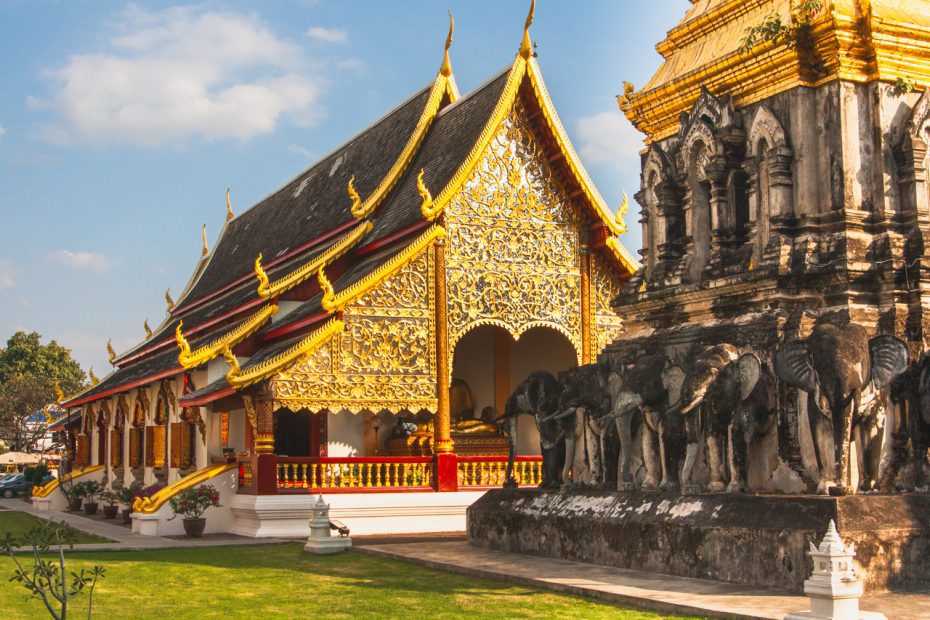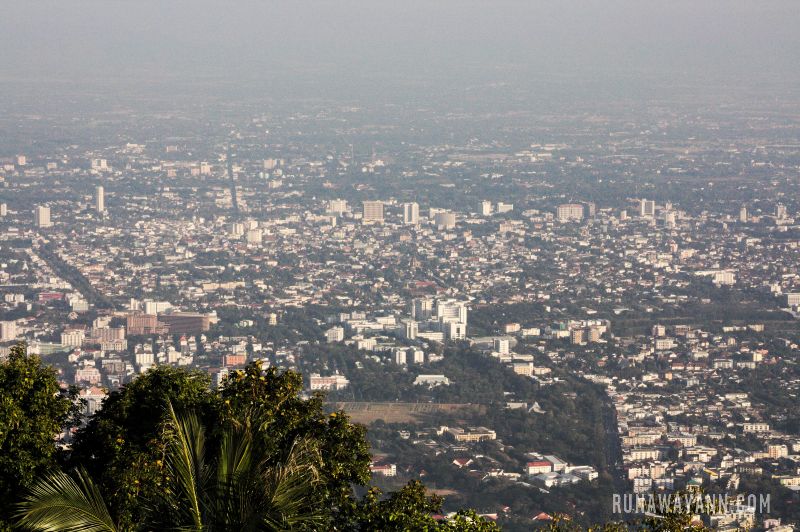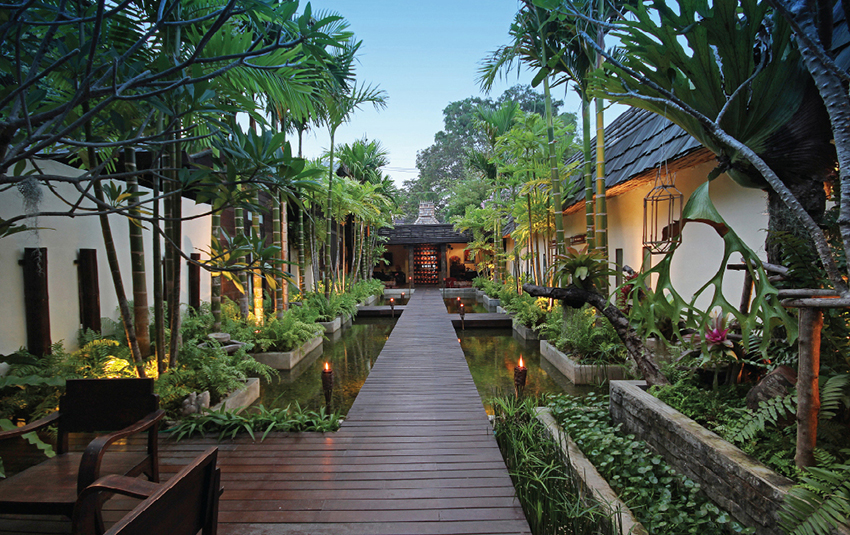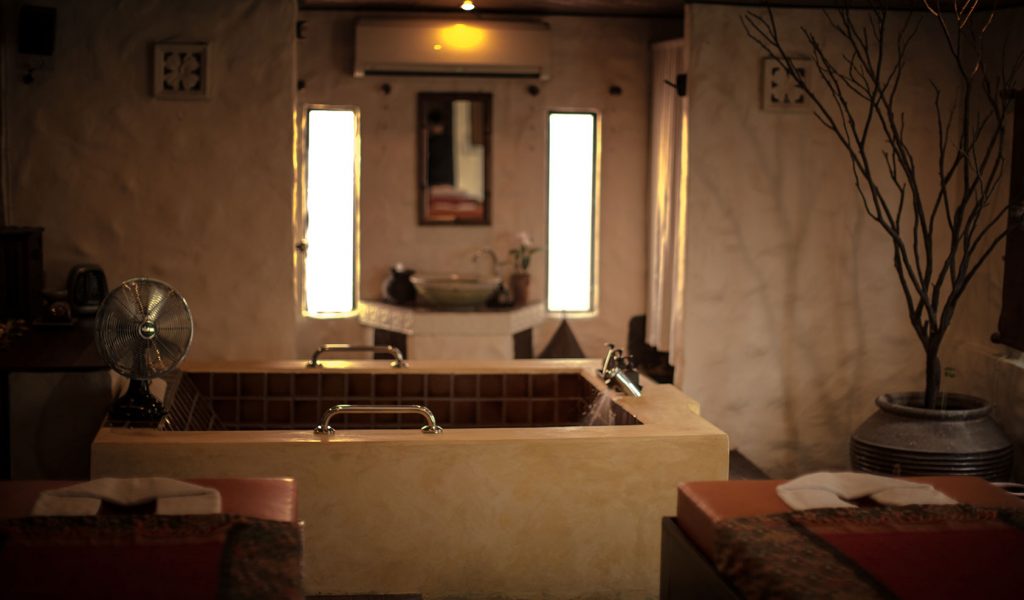This article contains affiliate links. If you make a booking through these links, I may earn a commission, supporting this blog. Rest assured, my recommendations are based on honest assessments, and using these links doesn’t affect prices for you. Thank you for your support!
Are you seeking a guide to Chiang Mai, Thailand? I’ve got you covered!
Chiang Mai, nestled in the mountains of northern Thailand, entices visitors with its cultural heritage, historic sites, and verdant landscapes. Here, tradition merges seamlessly with contemporary life, where tranquil temples harmonize with bustling markets.
Join me on a comprehensive journey through my guide to Chiang Mai, where we’ll uncover the city’s most compelling attractions.
From mystical temples to top-notch restaurants, I’ll highlight the best places to immerse yourself in the enchanting atmosphere of this extraordinary destination. Explore Chiang Mai’s wonders and start planning your ideal getaway with me!
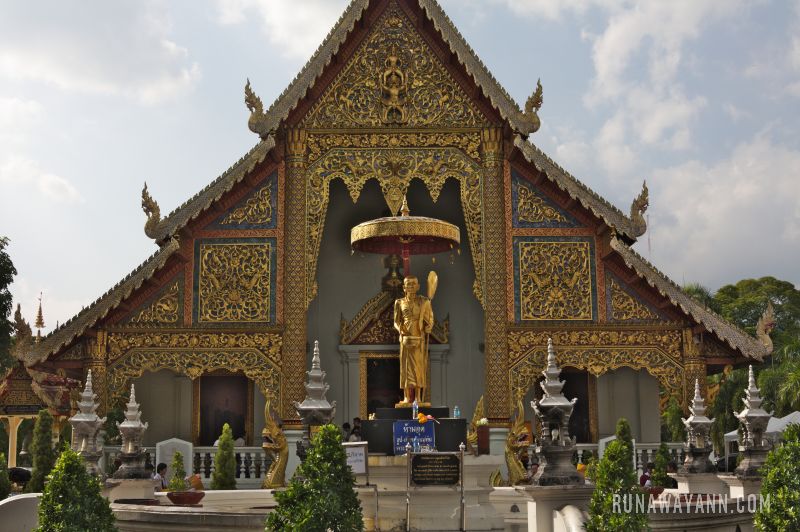
Table of Contents
The Ultimate Guide to Chiang Mai: Introduction
Chiang Mai stands as the largest city in northern Thailand, boasting a rich history tracing back to the ancient days of the Lanna Kingdom, often referred to as the “Kingdom of a Million Rice Fields“. It’s a locale where history and culture intricately weave together, creating a captivating tapestry.
The Lanna Kingdom engaged in prolonged rivalry with the neighboring Ayutthaya Kingdom, marked by intense struggles for power and influence. Nonetheless, Chiang Mai retained its autonomy until 1775 when it eventually succumbed.
The enduring legacy of the Lanna Kingdom permeates Chiang Mai, evident in its distinctive architecture and culinary customs. Drawing visitors worldwide, the city beckons those eager to delve deeper into the history and culture of northern Thailand.
The Ultimate Guide to Chiang Mai: How to Get to Chiang Mai?
You have several transportation options to travel from Bangkok to Chiang Mai. The most common choice is taking a flight from either Suvarnabhumi or Don Mueang Airport in Bangkok to Chiang Mai Airport. Ticket prices start at $50.
Alternatively, you can opt for direct trains departing from Hua Lamphong Station in Bangkok to Chiang Mai, which is a budget-friendly option. Ticket prices range from 1,011 to 1,903 baht.
Moreover, there are numerous buses running between Mo Chit Bus Terminal in Bangkok and Chiang Mai. The choice of the optimal mode of transport depends on your personal preferences.
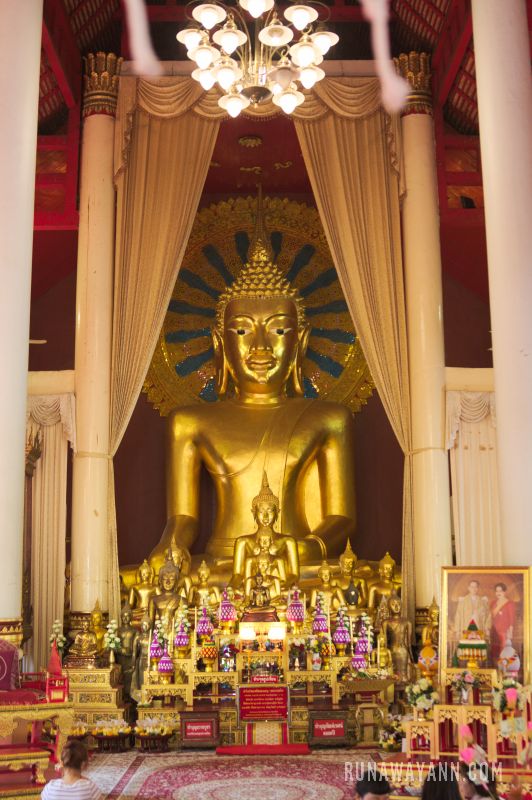
What Is The Best Time to Visit Chiang Mai?
For the ultimate experience, consider visiting during the cool and dry season, from November to February. This is when the weather is most favorable, with lower humidity and minimal rainfall, perfect for exploring outdoor attractions and immersing yourself in the city’s culture.
Don’t miss out on the vibrant festivals like Loy Krathong and Flower Festival happening during this time. They offer unique opportunities to participate in traditional Thai customs and celebrations, adding an extra layer of excitement to your visit.
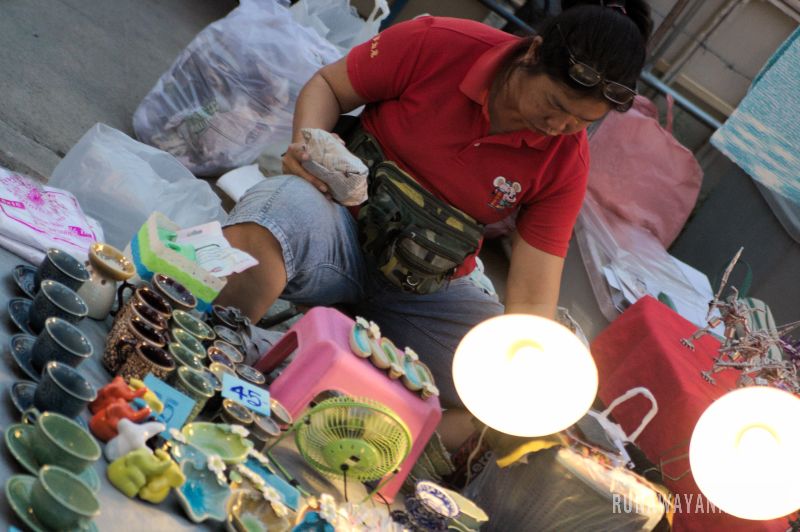
The Ultimate Guide to Chiang Mai: Where to Stay in Chiang Mai?
When it comes to choosing accommodation in Chiang Mai, there are plenty of options to suit every budget and preference.
If you’re looking for a central location with easy access to attractions and nightlife, staying in the Old City area is a great choice. Here, you’ll find a mix of guesthouses, boutique hotels, and luxury resorts.
For a more tranquil experience, consider staying in the Nimman area, known for its trendy cafes, boutiques, and art galleries. This area offers a more modern and upscale vibe, with plenty of stylish hotels and serviced apartments to choose from.
If you prefer to be surrounded by nature, consider staying in the outskirts of Chiang Mai, where you’ll find resorts nestled in the lush countryside or along the banks of the Ping River.
Here are some recommended hotels in Chiang Mai categorized by budget:
- Budget-friendly choice: BED Phrasingh-Adults Only
- Optimal for mid-range budgets: The Rim Chiang Mai
- Indulge in luxury: Four Seasons Resort Chiang Mai
The Ultimate Guide to Chiang Mai: What to See in Chiang Mai?
Wat Phra Singh
In the vicinity of Chiang Mai, there are over 300 temples, with 36 located within the city walls alone. A visit to Chiang Mai often begins with exploring the 14th-century temple complex of Wat Phra Singh.
This impressive complex houses an important Buddha statue, known as Buddha Phra Singh, which lends its name to the temple; the term ‘singh‘ in Thai refers to a lion. The origins of this statue remain unknown, but legend has it that it was brought from Ceylon.
Annually, on the thirteenth of April during the Songkran festival (Thai New Year), the statue is paraded through the streets of Chiang Mai in a sacred procession, starting from Viharn Lai Kham, as participants pay homage to the Buddha by splashing water on the statue.
In addition to Viharn Lai Kam and Viharn Luang, the temple complex also includes the ordination hall Ubosot, which left a lasting impression on us. Inside, visitors can see remarkable wax figures that closely resemble living monks.
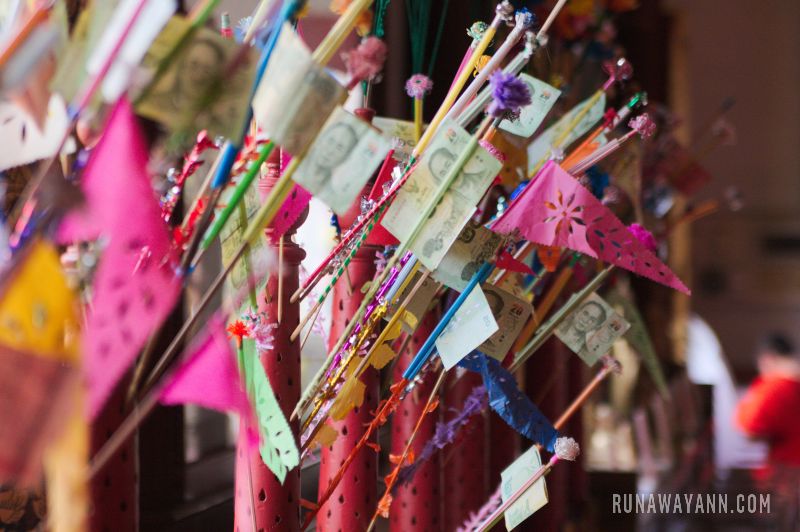
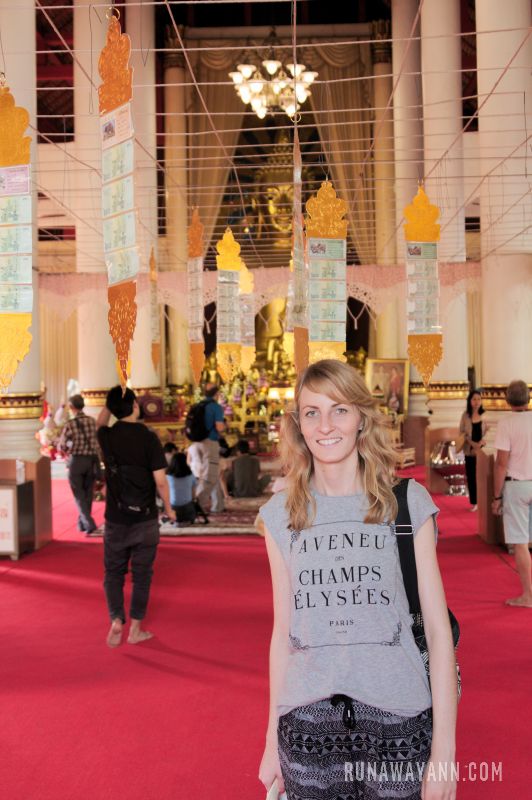
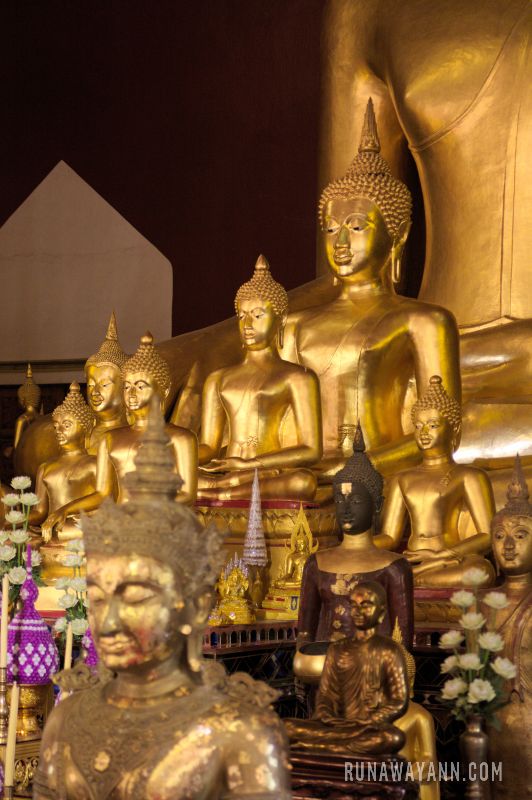
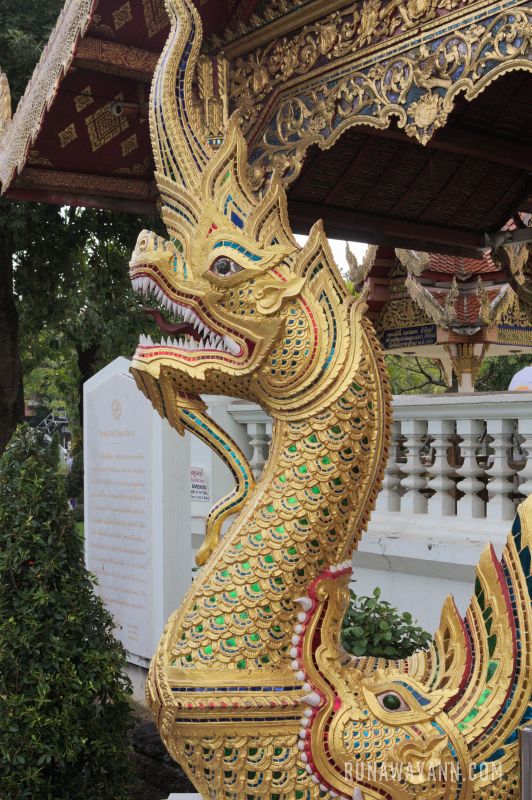
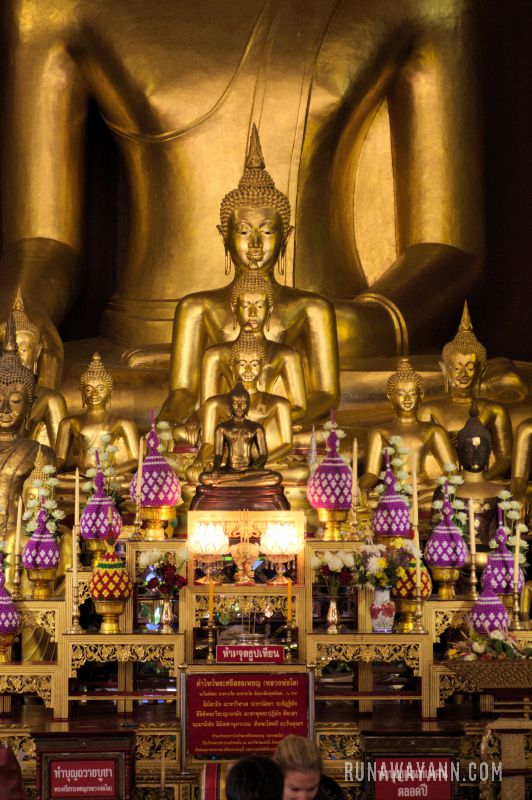
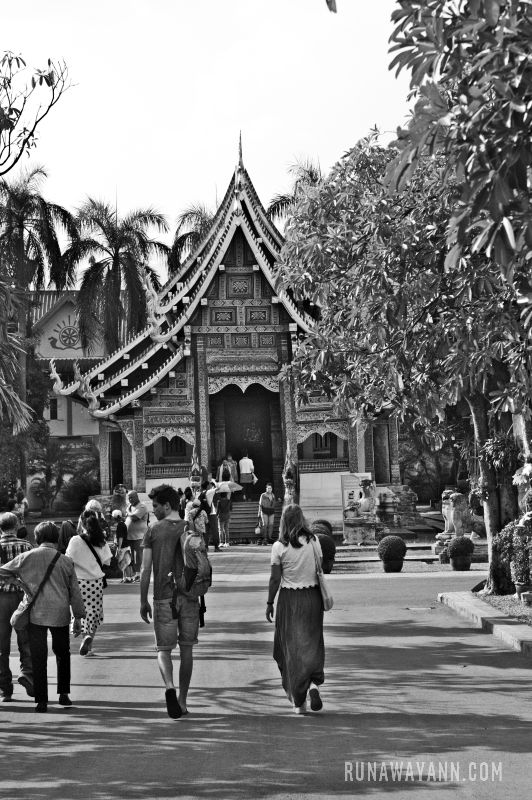
Wat Chedi Luang
Another noteworthy site to visit in Chiang Mai is Wat Chedi Luang, home to the largest chedi in the city. This massive structure was constructed between 1385 and 1402 and stands as a prominent feature of the cityscape.
Formerly enshrined within the chedi was the Emerald Buddha, Thailand’s national treasure. Regrettably, following an earthquake in 1545, the chedi endured substantial damage, and today, we can only admire its reconstructed form.
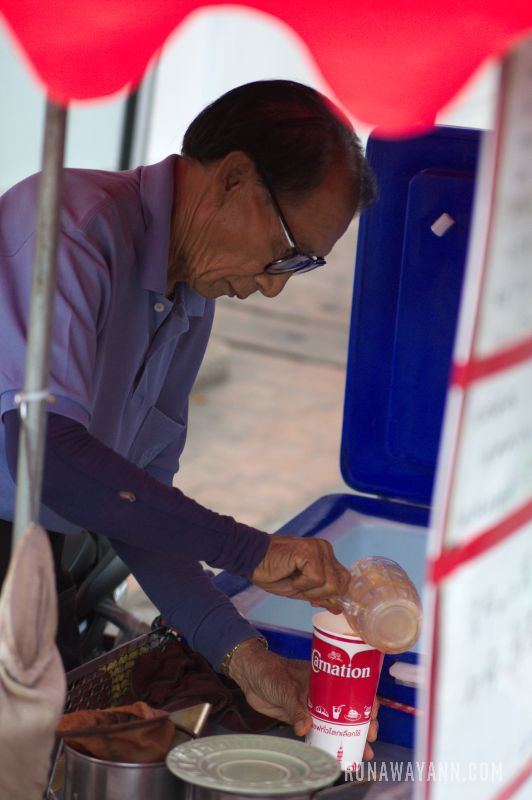
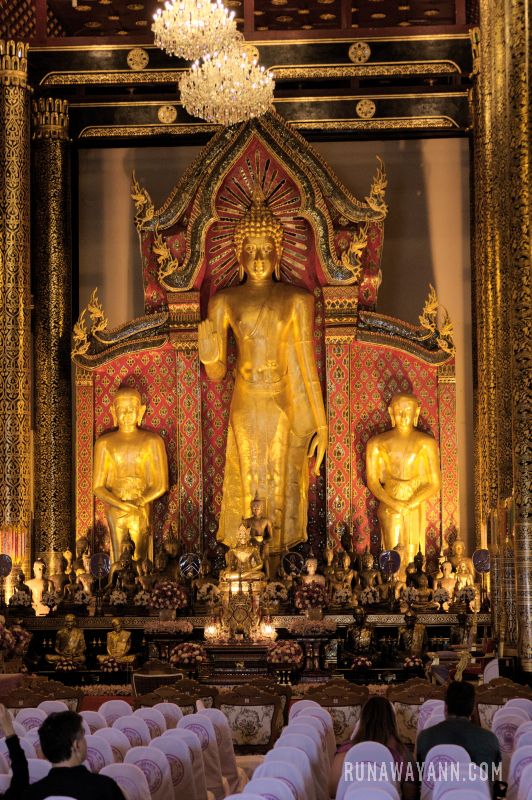
Wat Phan Tao
Another extraordinary location in Chiang Mai, situated near Wat Chedi Luang, is Wat Phao Tao. It stands out as one of the city’s most atmospheric temples, constructed entirely from teak wood.
Reportedly, it exudes exceptional beauty during evening prayers when the darkness of the surroundings contrasts with the monks’ orange robes.
An intriguing aspect is that teak wood, renowned for its durability and weather resistance, was utilized in the temple’s construction, rendering Wat Phao Tao not only aesthetically pleasing but also exceptionally enduring.
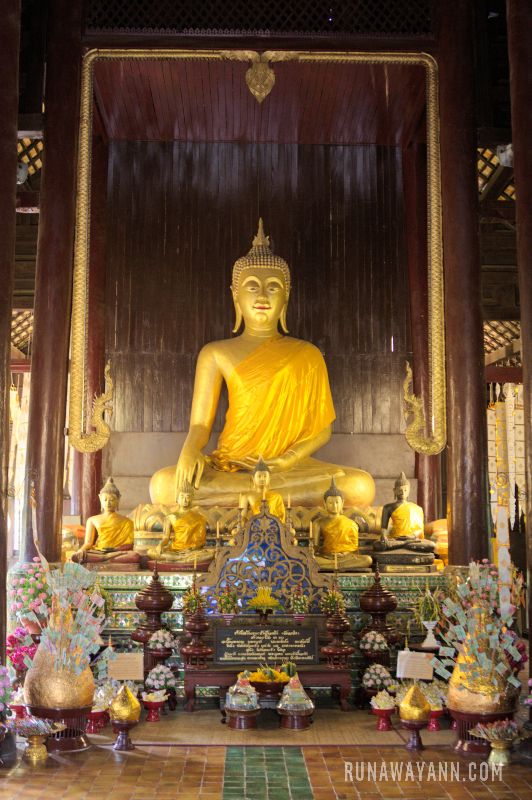

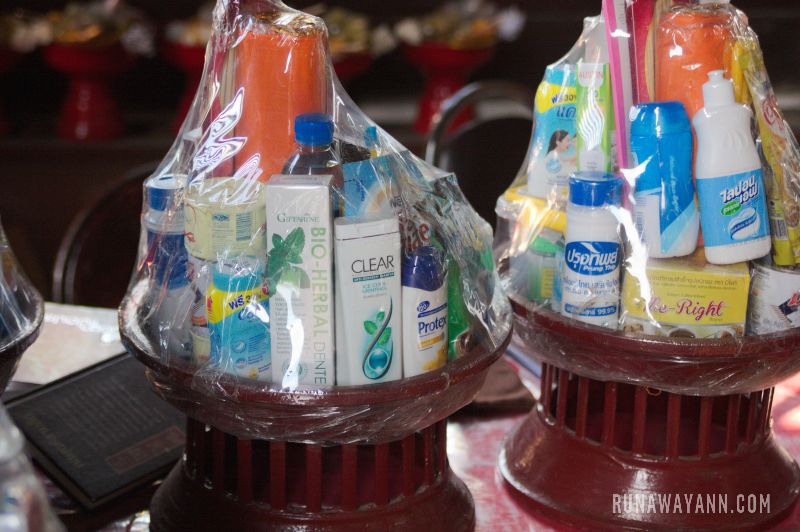

Wat Chiang Man
After exploring Wat Phan Tao, it’s worth venturing to Wat Chiang Man. Constructed in 1297, this temple holds the distinction of being the oldest in the city.
Within the temple grounds, visitors can admire the Chedi Chang Lom, encircled by 15 elephant statues, housing sacred Buddha relics within.
Of particular interest are two exquisite viharas (Buddhist monasteries). The larger one boasts a 15th-century Buddha, while the smaller one showcases two significant statues – Phra Sae Tang Khamani and Phra Sila.
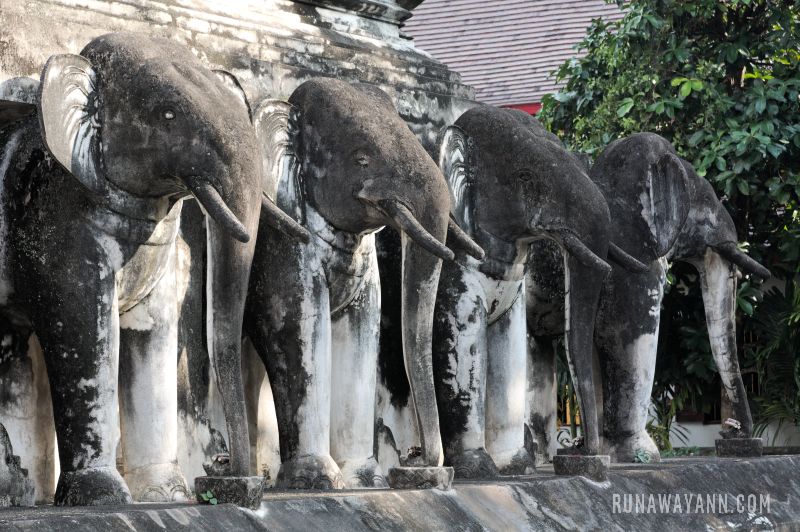

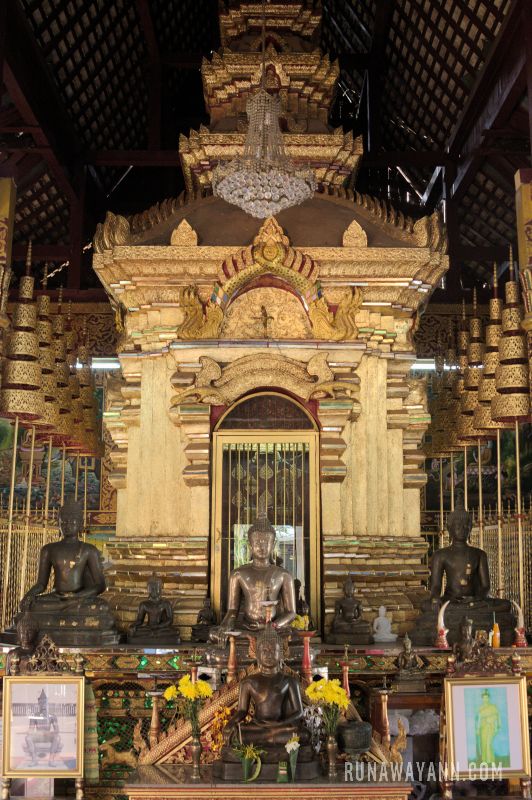

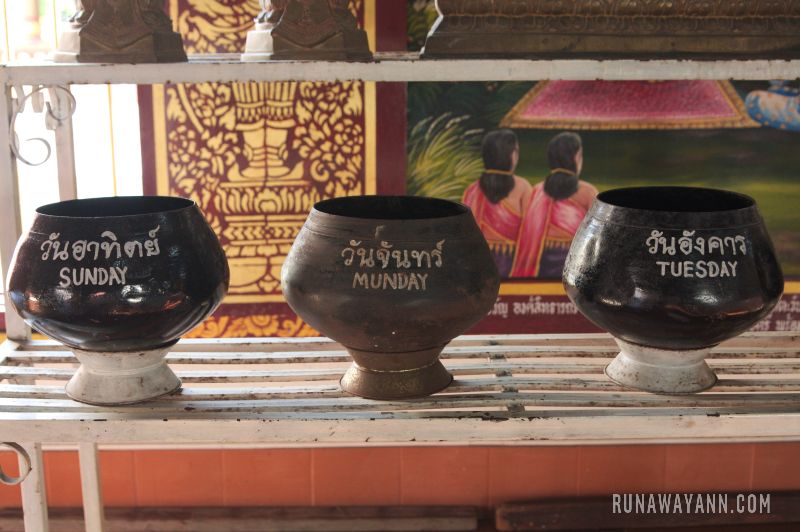

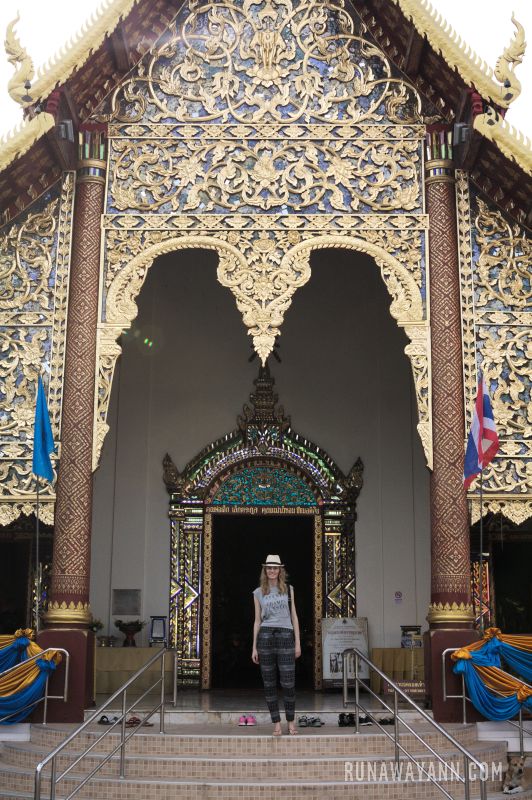

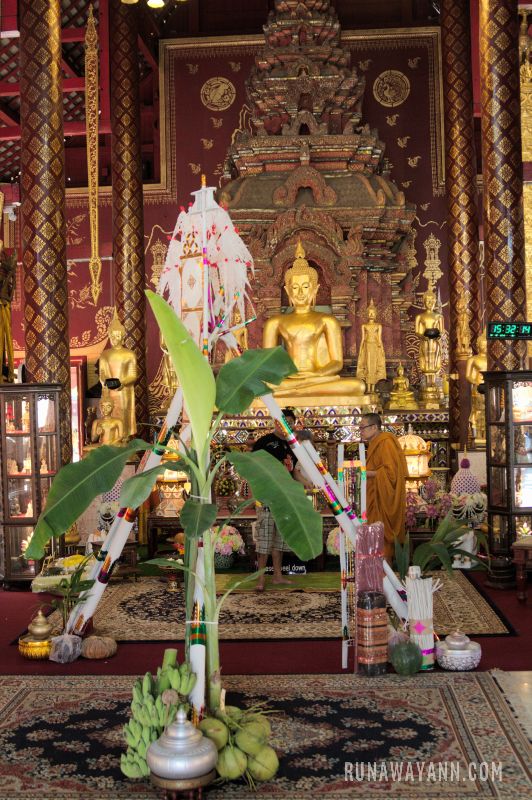

Wat Phra That Doi Suthep Temple
Another remarkable destination in Chiang Mai is the Wat Phra That Doi Suthep Temple. Situated atop a hill approximately 1060 meters above sea level, within the Doi Suthep-Pui National Park, this temple offers breathtaking views of the entire city of Chiang Mai from its elevated vantage point.
Dating back to the 13th century, this Buddhist sanctuary is steeped in local legend, with a white elephant playing a pivotal role in its origins. According to the tale, a monk from the Sukhothai Kingdom had a prophetic dream revealing the location of a mysterious relic. Upon discovery, the relic was transported to the Lanna Kingdom, inspiring the construction of Wat Phra That Doi Suthep.
Upon arrival, the relic split into two pieces. One fragment became an adornment for the Suandok Temple, while the larger piece was hung on the back of a white elephant, which was then released into the jungle. Legend has it that the elephant ascended Doi Suthep, trumpeted three times, and then fell dead. King Nu Naone interpreted this as an omen and ordered the immediate construction of the temple to house the relics.
Accessing the Wat Phra That Doi Suthep Temple from the city center can be achieved by renting a scooter, taking a taxi, or opting for the popular mode of transportation known as a “songthaew.” In my case, I chose the latter option and negotiated the fare down to 80 baht.
The temple’s entrance is marked by elaborately decorated stairs, flanked by balustrades depicting mythical Naga serpents. Climbing 309 steps leads to the temple gates, although an elevator is available for those seeking an easier ascent. Admission to the temple is priced at 50 baht.
At the heart of the temple complex lies an impressive golden chedi, surrounded by latticed umbrellas. Within the enclave formed by the chedi’s walls, visitors can admire beautiful murals and a replica of the Emerald Buddha, with the original housed in Bangkok.
Other highlights within the complex include a statue of the Hindu god Ganesha and a depiction of the legendary White Elephant, accompanied by the tale of its significance.
A broad pathway encircling the temple guides visitors to a spacious viewing terrace, offering a stunning panoramic vista of the surrounding landscape. On clear days, the view extends to encompass the entire city, providing a memorable conclusion to the visit.
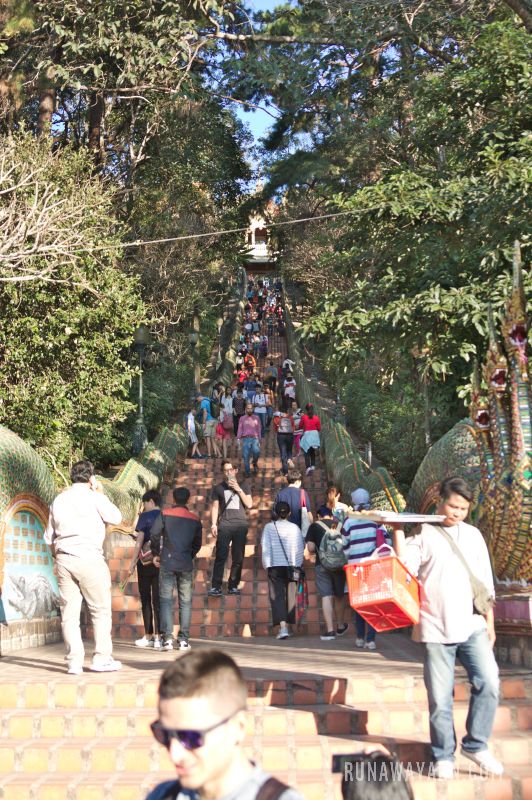

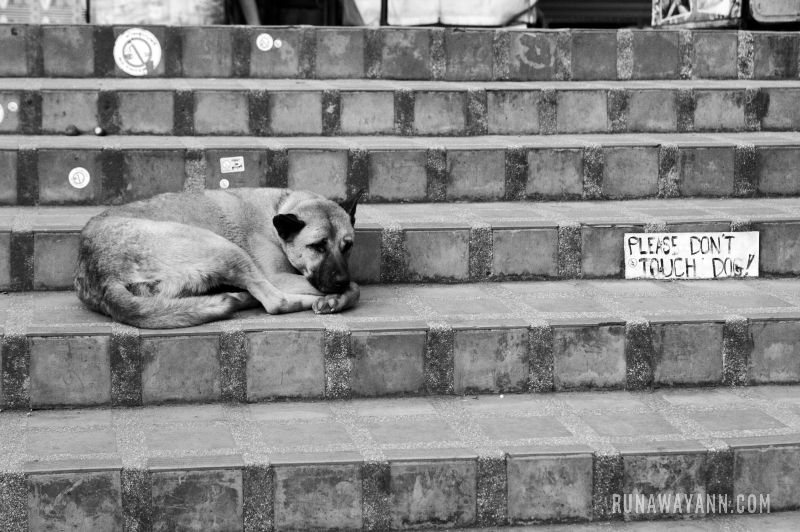

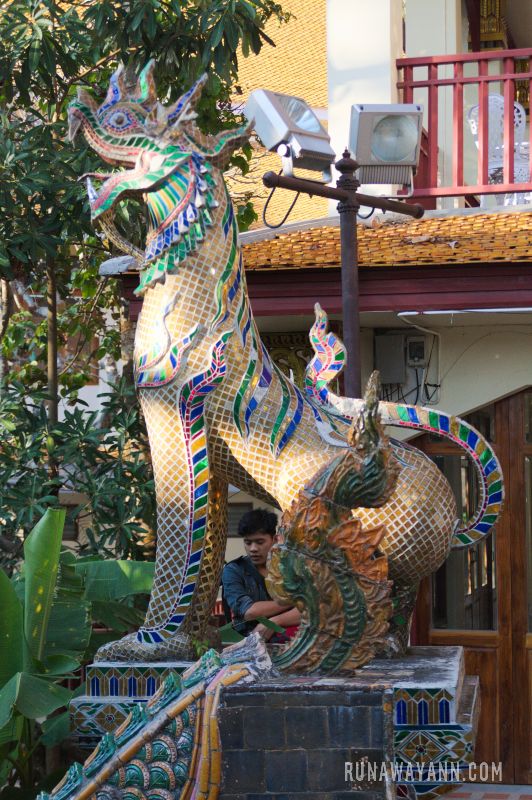

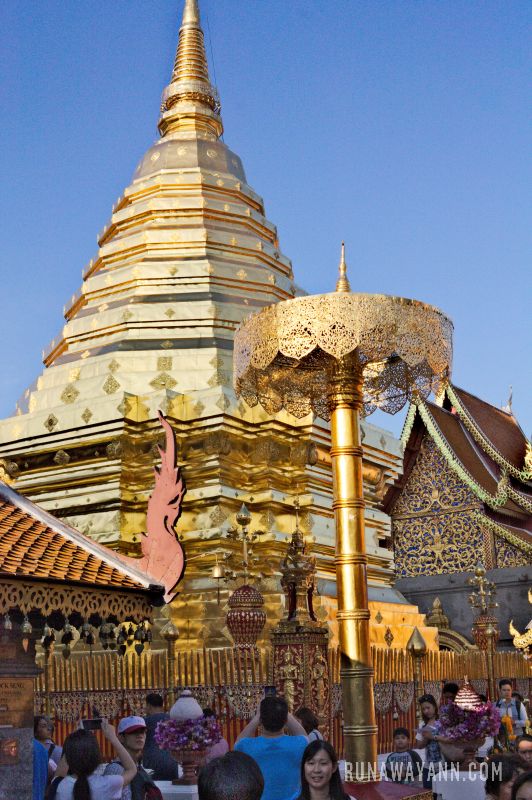

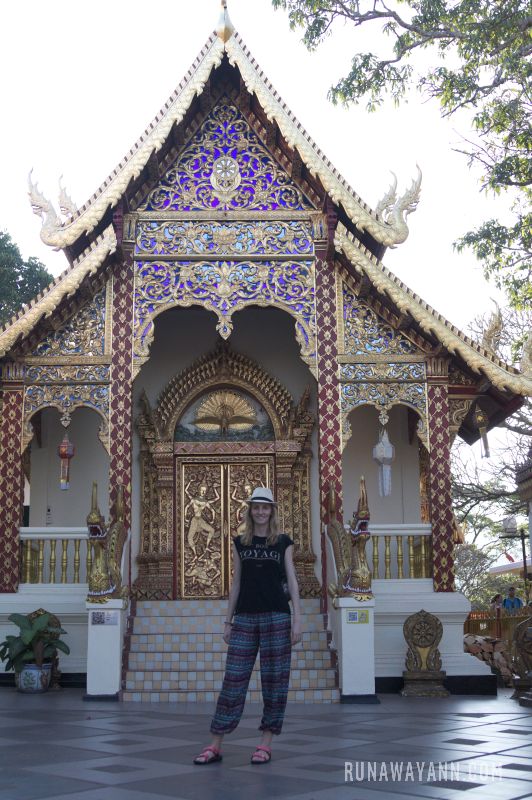

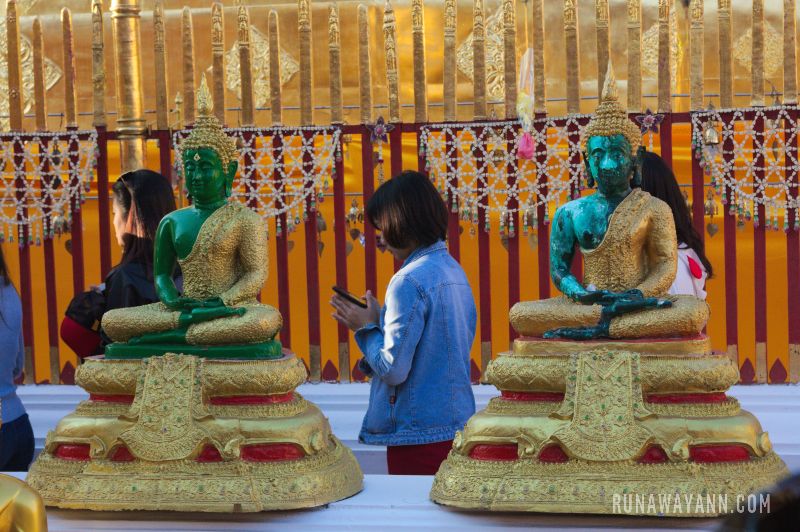

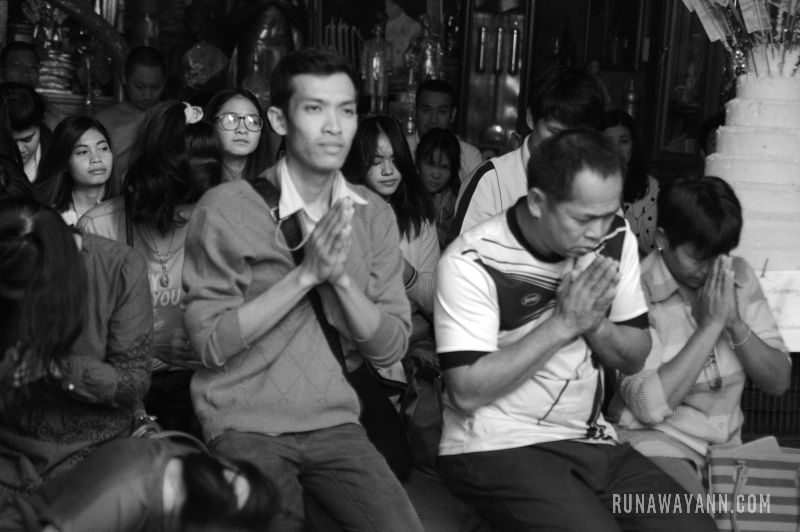

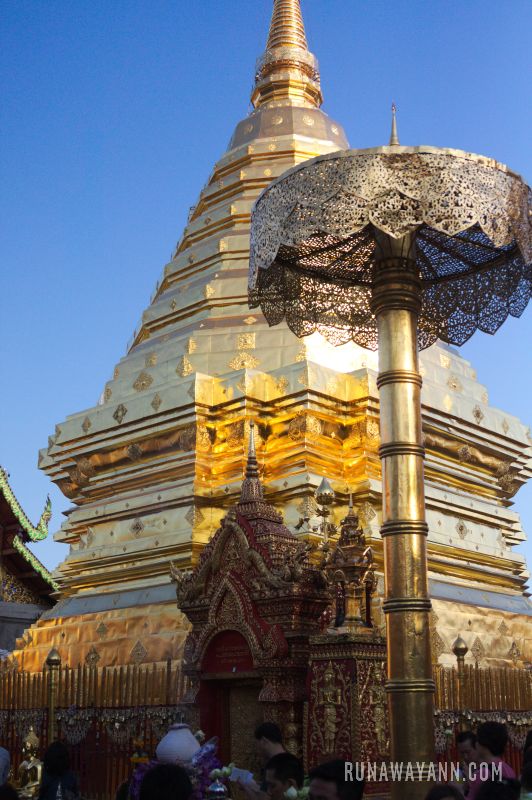

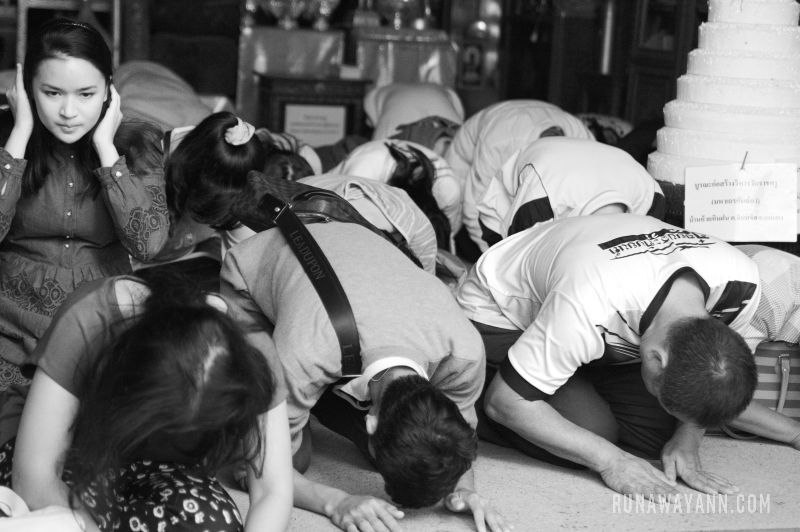

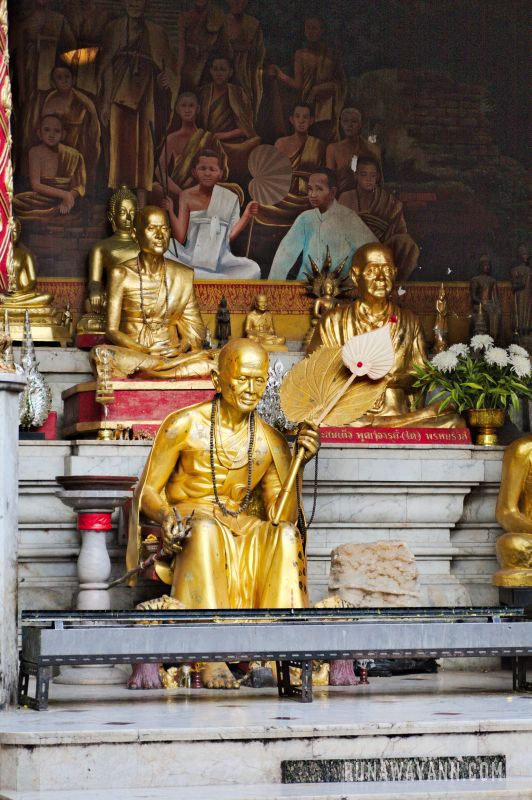

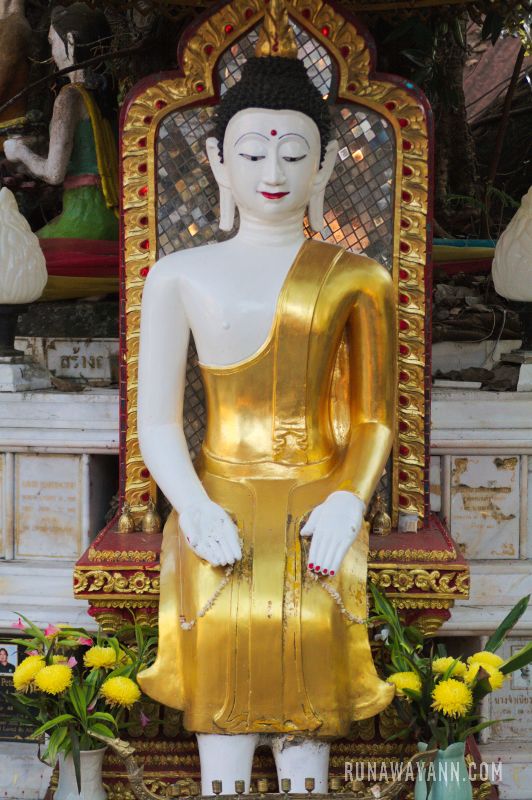

Wat Inthakhin
The last temple I’d like to recommend in Chiang Mai is the less-visited yet equally charming Wat Inthakhin. Situated in the heart of the Old City, this complex dates back over 700 years.
Once a pillar of the city, Wat Inthakhin held significant spiritual importance but gradually waned in significance compared to its neighbor, Wat Chedi Luang. During the Burmese occupation in 1775, the temple was abandoned.
The Viharn, which can be admired within the compound, was relatively recently built to accommodate impressive ancient Buddha statues previously housed in a simple shed.
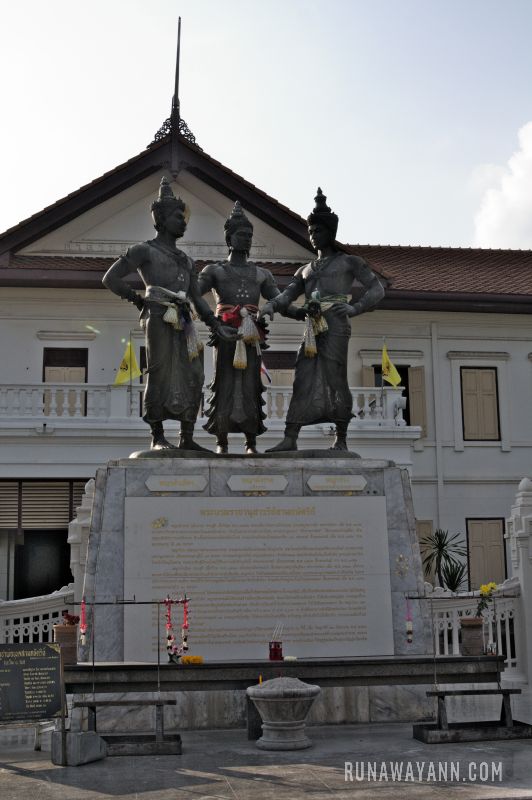

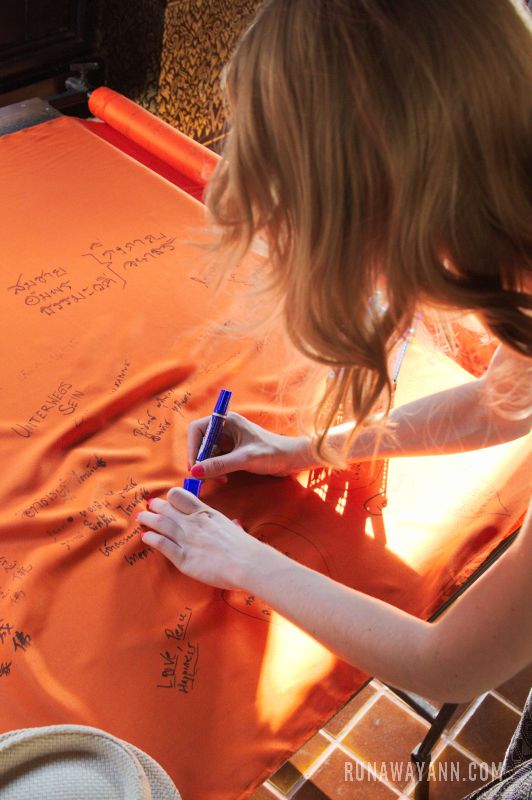

Night Bazaar
No visit to Chiang Mai would be complete without experiencing the renowned Night Bazaar. Situated on the eastern side of the Old City along Chang Khlan Road, this bustling market operates daily from dusk until midnight.
While Chang Khlan Street remains tranquil during the day, it transforms at dusk as street vendors set up their stalls. At the Night Bazaar, you’ll discover a plethora of offerings, from counterfeit branded goods to local crafts and traditional Thai delicacies.
I recommend haggling to secure better prices; typically, you can negotiate the initial price down by an additional 20-30%. However, not all vendors are open to bargaining, and some maintain fixed prices.
Personally, I found it unsettling that wandering into side alleys can lead to encounters with Thai bar girls who target unsuspecting tourists seeking entertainment.
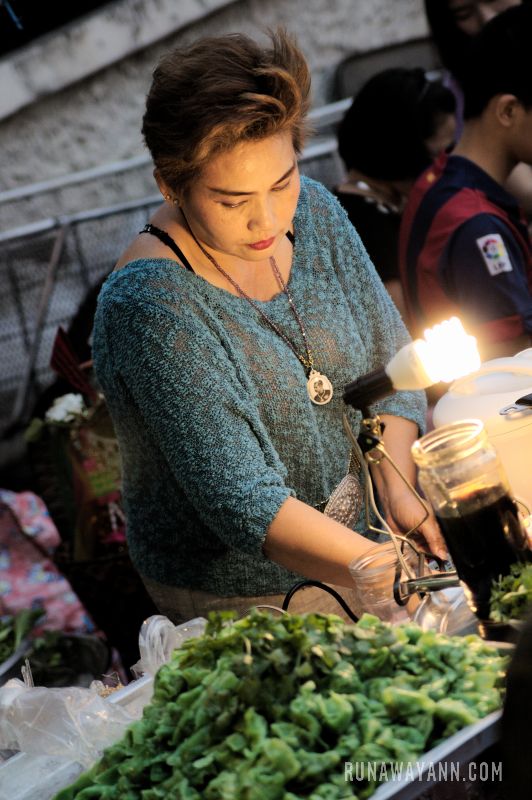

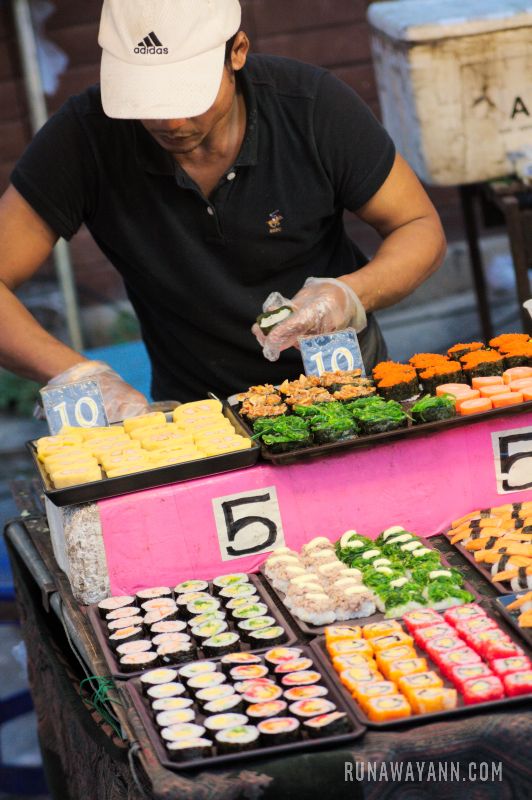

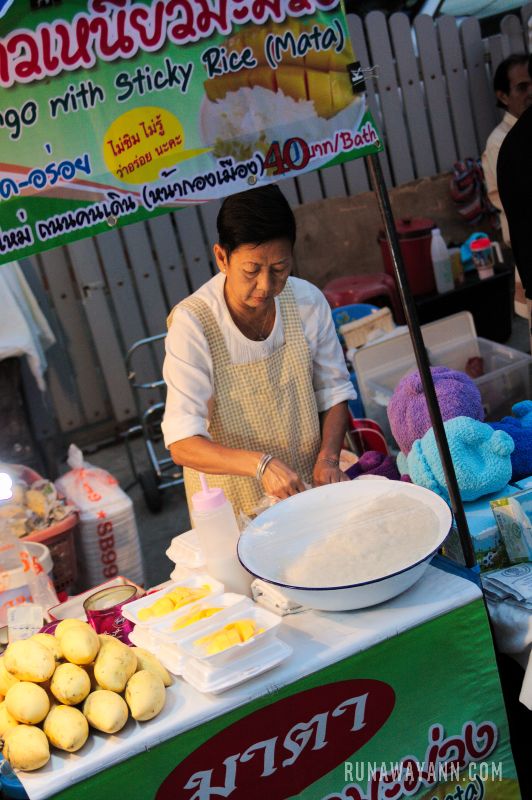

Saturday Market
If you’re in Chiang Mai over the weekend, don’t miss the chance to explore the local market known as the Saturday Market, or alternatively, the Wui Lai Market. Situated southwest of the Old City along Wui Lai Street, it runs every Saturday from 4:00 PM until midnight.
Similar to the Night Bazaar, the road is closed to traffic during this time, allowing for easy bargaining with vendors and navigation between stalls.
At the market, you’ll find a wide array of goods. From silverware at attractive prices to wooden sculptures, rainbow-colored cotton shirts, counterfeit bags, “branded” perfumes, handcrafted soaps, and local artwork.
Food stalls offering delicious treats are also plentiful, and street performers contribute to the lively atmosphere.
If you’re in the mood for some relaxation, you can also indulge in a Thai massage. Prices start as low as 100 baht per person, and massages are often performed in the middle of the street between stalls.
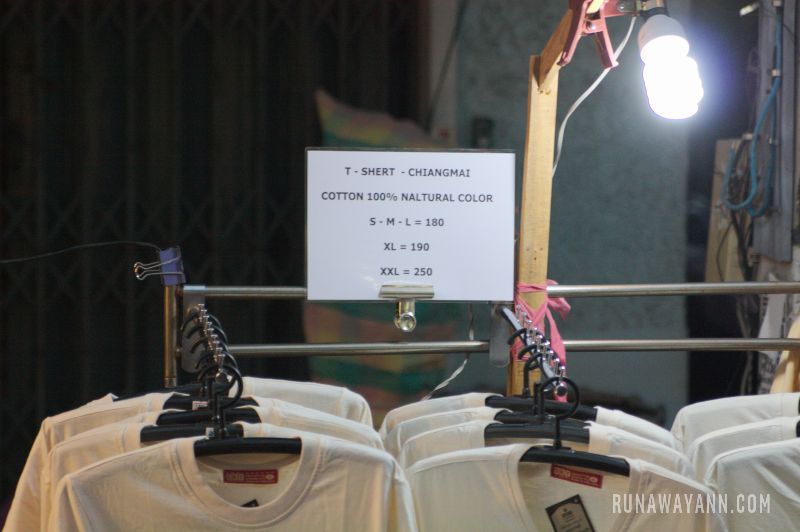

Thai Spa
Chiang Mai is renowned for its charming temples, but few realize it’s also home to the Royal Massage Academy, hailed as the best in the country. So, while in the “New City”, indulging in a Thai massage is a must.
With over two hundred spa salons, Chiang Mai offers a plethora of treatments at various price points, ensuring there’s something for everyone.
I highly recommend visiting Fah Lanna Spa. It’s a cozy establishment run by a group of friends who share a passion for ecology. Actively involved in the local community, the owners support charitable organizations providing education for refugee children. Conveniently located in the center of the Old City, the spa operates daily from 12 PM to 9 PM.
It’s advisable to book treatments at least one day in advance. With 25 private treatment rooms accommodating 1 to 4 beds, some equipped with private showers or even bathtubs for couples, Fah Lanna Spa ensures a serene experience.
Additionally, the spa offers complimentary transportation to and from your hotel, enhancing the overall experience.
Upon arrival at Fah Lanna Spa, you’ll be greeted with tea and asked to complete a brief health and massage intensity preference questionnaire.
Choose from around fifty different body treatments from the extensive menu. For first-timers, a traditional one-hour Thai massage is highly recommended.
The treatment begins with a foot washing ritual before moving to a private room for the massage. During the session, masseurs employ various techniques derived from passive yoga, using hands, feet, thumbs, elbows, and forearms.
Following the massage, unwind in the café with a cup of delicious tea, enhancing the relaxation experience. Sounds wonderful, doesn’t it?
The Ultimate Guide to Chiang Mai: Where to Eat in Chiang Mai?
Mr Kai Restaurant
During your visit to Chiang Mai, you simply must dine at one of the finest restaurants I’ve had the pleasure of experiencing in all of Thailand – Mr. KAI Restaurant.
The buzz surrounding this establishment is evident from the long queue outside. While the restaurant tends to be bustling with patrons, once seated and your order placed, the food arrives promptly, served by the friendly staff or even Mr. Kai himself!
I was particularly enamored with the regional Thai khao soi soup, the flavorful vegetarian tofu curry, and the delightful seafood risotto. Each dish I sampled was not only delicious but also generously portioned and offered at a very reasonable price.
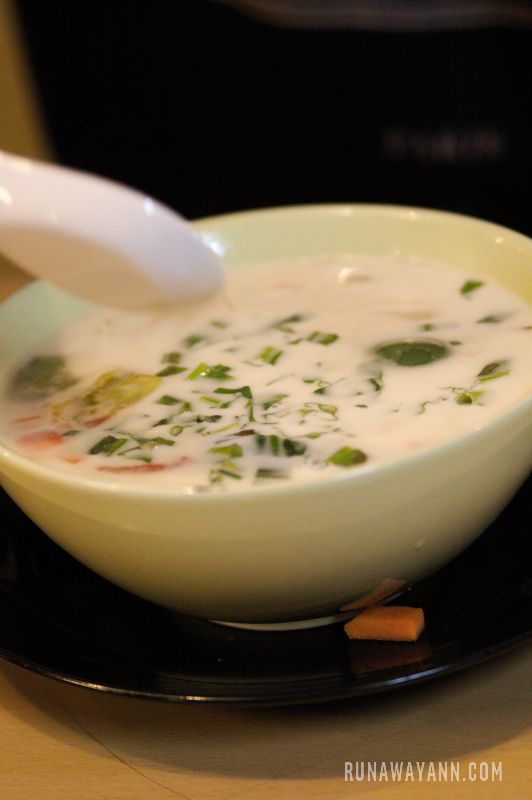

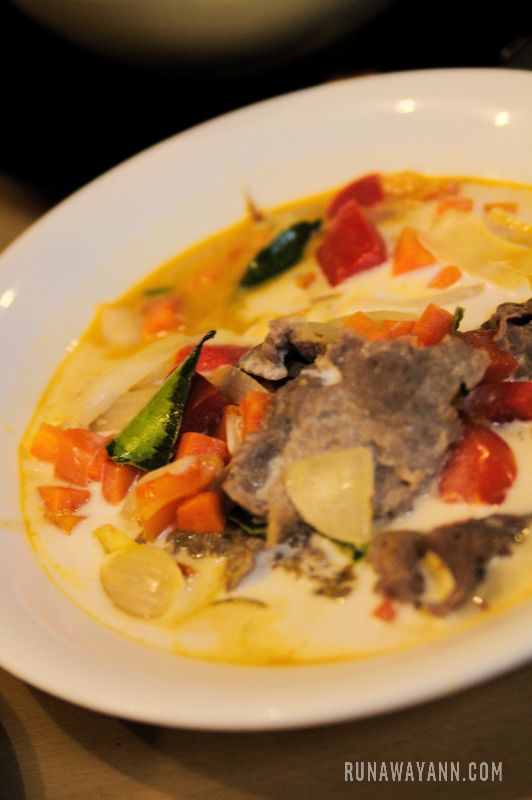

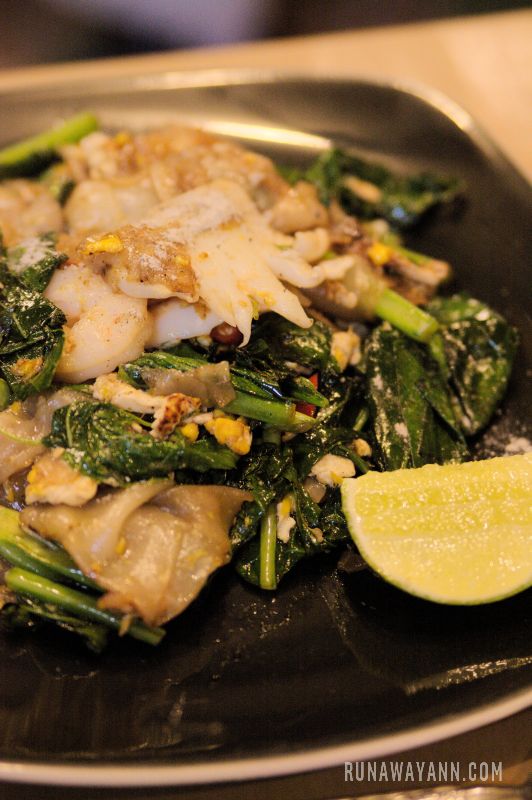

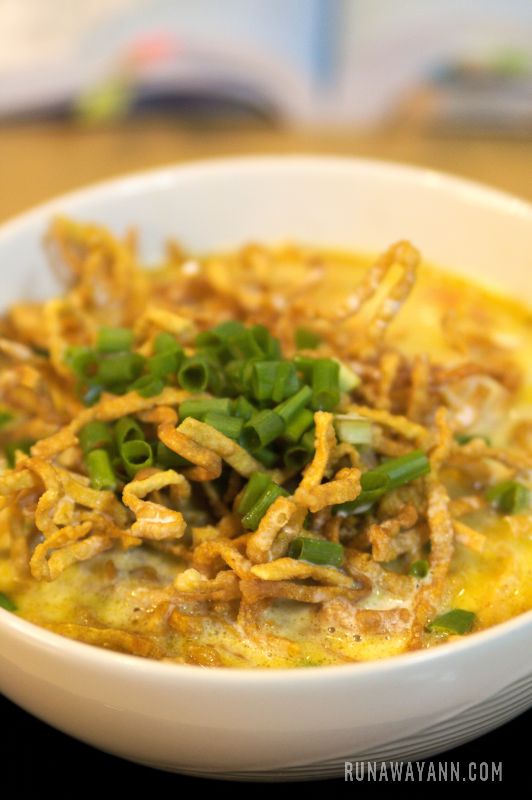

Hanna Restaurant & Coffee Shop
Another must-visit spot in Chiang Mai is the local café, Hanna Restaurant & Coffee Shop. It offers an incredibly inviting atmosphere, making it the perfect spot for breakfast or lunch in the city.
In addition to their fantastic iced coffee, you can also indulge in their delicious vegetarian spring rolls. Prepare for an unforgettable culinary experience!
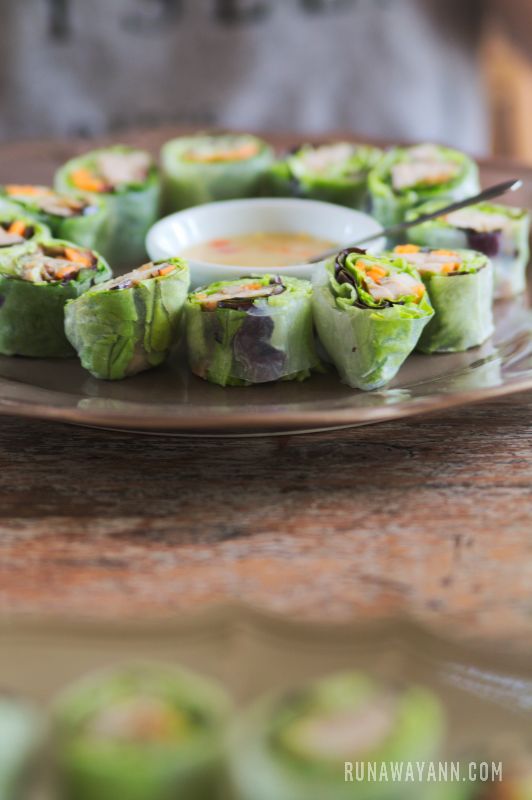

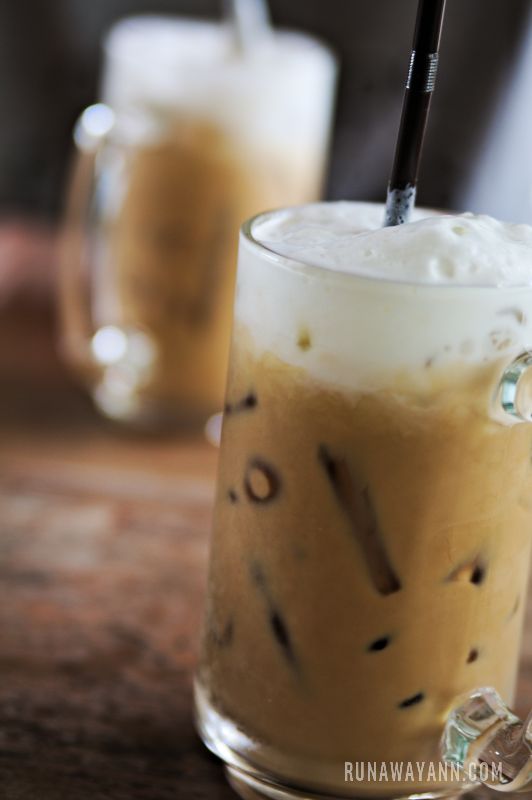

Coffee Corner Kitchen
Another highly recommended place for lunch in Chiang Mai is the Coffee Corner Kitchen restaurant. It’s a charming establishment with a delightful outdoor terrace and exceptional service.
In addition to classic Thai specialties, the menu also offers dishes typical of Japanese cuisine, providing a welcome change of pace.
The dishes served are fresh, aromatic, and prepared with meticulous attention to detail, ensuring that every meal is truly memorable.
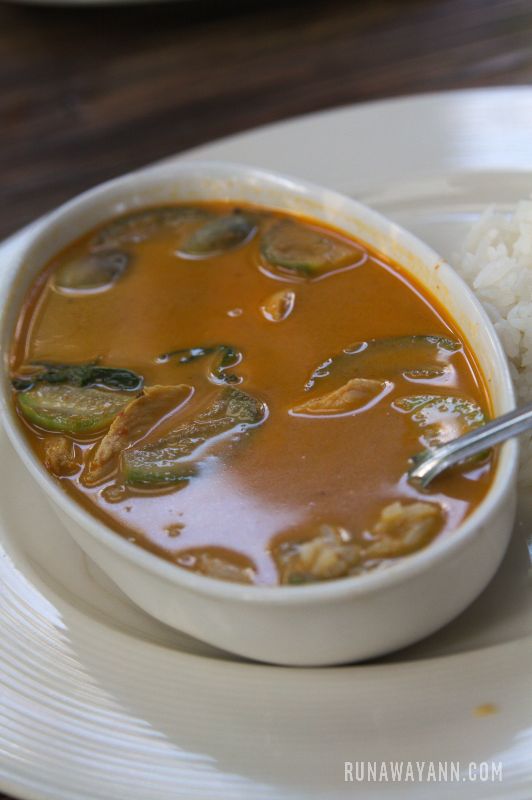

The Ultimate Guide to Chiang Mai: Summary
Chiang Mai, situated in northern Thailand, stands out as one of the most captivating destinations in Southeast Asia. Its rich cultural heritage, enchanting Buddhist temples, breathtaking natural landscapes, and memorable culinary delights attract tourists from all corners of the globe. If you’re considering a journey to Chiang Mai, rest assured, you won’t be disappointed.
Share your experiences from your visit to this magical place in the comments section below! If you found this article on what to see in Chiang Mai helpful, please consider sharing it with your friends!
Explore more articles that might interest you:
- Ultimate Thailand Travel Guide: Plan Your Journey in Asia’s Top Spot (2024)
- One Day in Ayutthaya: Must-See Sights and Dining Hotspot
- 2024 Koh Samui Travel Guide: Your Ultimate Gateway to Thai Bliss
- Taste of Thailand: 10 Iconic Thai Dishes You Can’t Miss
- Thailand Travel Don’ts: 10 Helpful Tips for a Safe and Respectful Adventure
